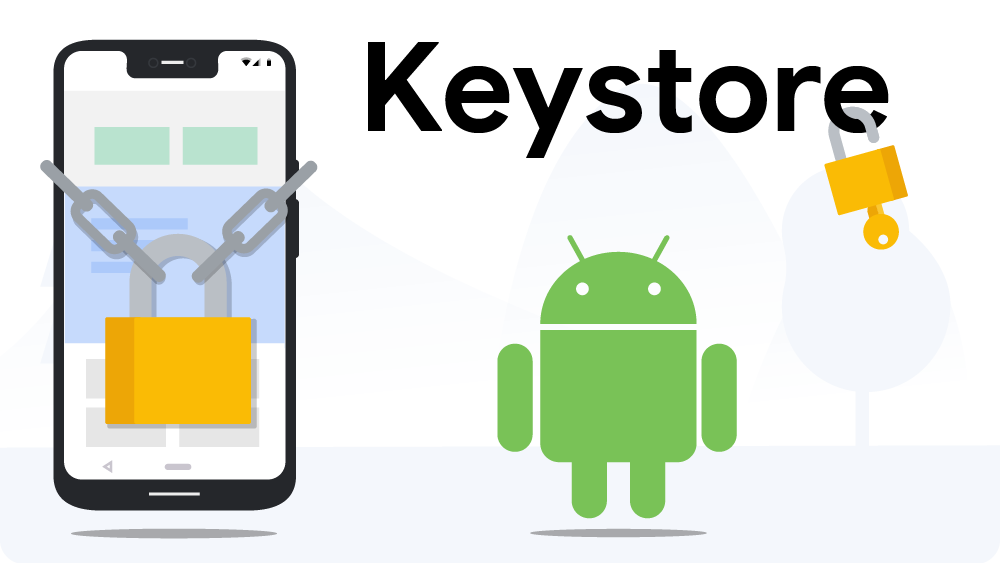Posted by Brian Claire Young and Shawn Willden, Android Security; and Frank Salim, Google Pay

New Android Pie Keystore Features
The Android Keystore provides application developers with a set of cryptographic tools that are designed to secure their users' data. Keystore moves the cryptographic primitives available in software libraries out of the Android OS and into secure hardware. Keys are protected and used only within the secure hardware to protect application secrets from various forms of attacks. Keystore gives applications the ability to specify restrictions on how and when the keys can be used.
Android Pie introduces new capabilities to Keystore. We will be discussing two of these new capabilities in this post. The first enables restrictions on key use so as to protect sensitive information. The second facilitates secure key use while protecting key material from the application or operating system.
Keyguard-bound keys
There are times when a mobile application receives data but doesn't need to immediately access it if the user is not currently using the device. Sensitive information sent to an application while the device screen is locked must remain secure until the user wants access to it. Android Pie addresses this by introducing keyguard-bound cryptographic keys. When the screen is locked, these keys can be used in encryption or verification operations, but are unavailable for decryption or signing. If the device is currently locked with a PIN, pattern, or password, any attempt to use these keys will result in an invalid operation. Keyguard-bound keys protect the user's data while the device is locked, and only available when the user needs it.
Keyguard binding and authentication binding both function in similar ways, except with one important difference. Keyguard binding ties the availability of keys directly to the screen lock state while authentication binding uses a constant timeout. With keyguard binding, the keys become unavailable as soon as the device is locked and are only made available again when the user unlocks the device.
It is worth noting that keyguard binding is enforced by the operating system, not the secure hardware. This is because the secure hardware has no way to know when the screen is locked. Hardware-enforced Android Keystore protection features like authentication binding, can be combined with keyguard binding for a higher level of security. Furthermore, since keyguard binding is an operating system feature, it's available to any device running Android Pie.
Keys for any algorithm supported by the device can be keyguard-bound. To generate or import a key as keyguard-bound, call setUnlockedDeviceRequired(true) on the KeyGenParameterSpec or KeyProtection builder object at key generation or import.
Secure Key Import
Secure Key Import is a new feature in Android Pie that allows applications to provision existing keys into Keystore in a more secure manner. The origin of the key, a remote server that could be sitting in an on-premise data center or in the cloud, encrypts the secure key using a public wrapping key from the user's device. The encrypted key in the SecureKeyWrapper format, which also contains a description of the ways the imported key is allowed to be used, can only be decrypted in the Keystore hardware belonging to the specific device that generated the wrapping key. Keys are encrypted in transit and remain opaque to the application and operating system, meaning they're only available inside the secure hardware into which they are imported.

Secure Key Import is useful in scenarios where an application intends to share a secret key with an Android device, but wants to prevent the key from being intercepted or from leaving the device. Google Pay uses Secure Key Import to provision some keys on Pixel 3 phones, to prevent the keys from being intercepted or extracted from memory. There are also a variety of enterprise use cases such as S/MIME encryption keys being recovered from a Certificate Authorities escrow so that the same key can be used to decrypt emails on multiple devices.
To take advantage of this feature, please review this training article. Please note that Secure Key Import is a secure hardware feature, and is therefore only available on select Android Pie devices. To find out if the device supports it, applications can generate a KeyPair with PURPOSE_WRAP_KEY.














